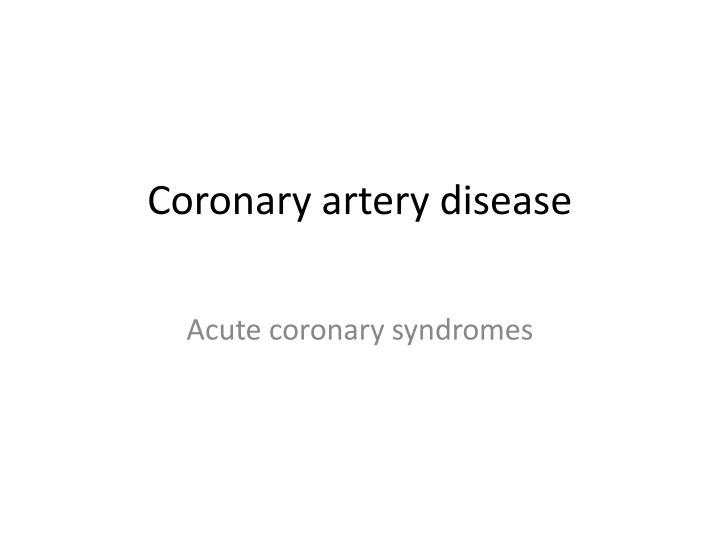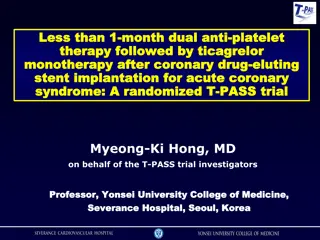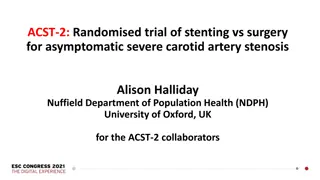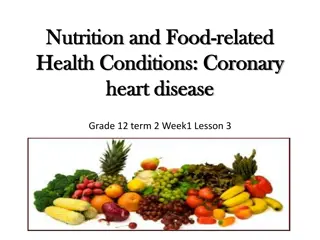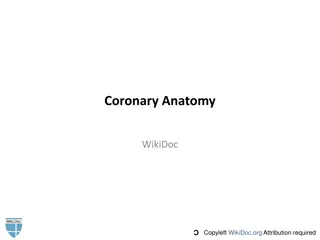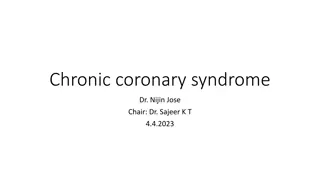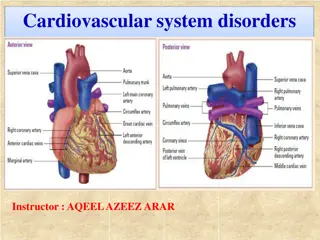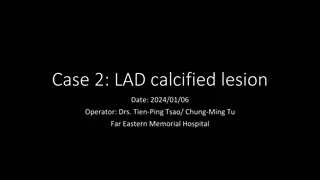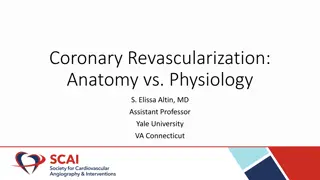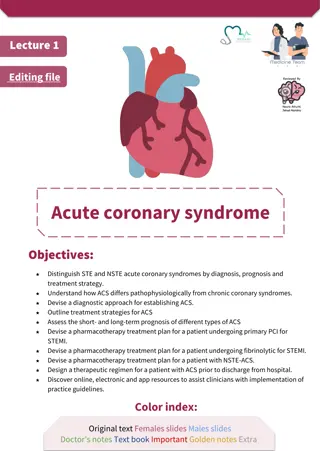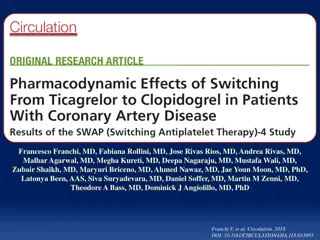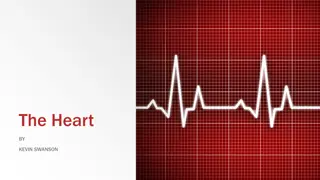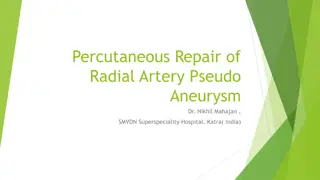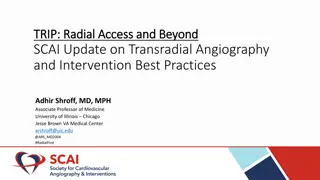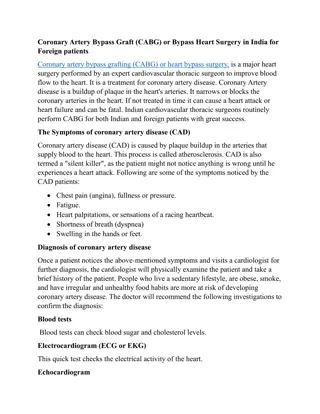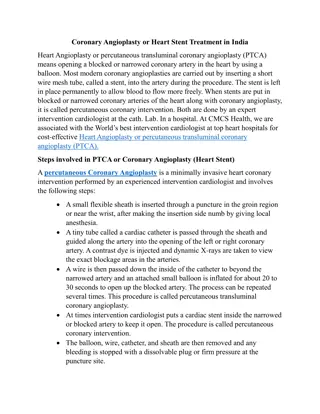Coronary artery disease
Acute coronary syndromes encompass a range of conditions resulting from acute myocardial ischemia, including unstable angina, NSTEMI, and STEMI. Learn about the classification, symptoms, and initial management of ACS.
Download Presentation

Please find below an Image/Link to download the presentation.
The content on the website is provided AS IS for your information and personal use only. It may not be sold, licensed, or shared on other websites without obtaining consent from the author.If you encounter any issues during the download, it is possible that the publisher has removed the file from their server.
You are allowed to download the files provided on this website for personal or commercial use, subject to the condition that they are used lawfully. All files are the property of their respective owners.
The content on the website is provided AS IS for your information and personal use only. It may not be sold, licensed, or shared on other websites without obtaining consent from the author.
E N D
Presentation Transcript
Coronary artery disease Acute coronary syndromes
Definition Acute coronary syndrome (ACS) is a term used to describe a constellation of symptoms resulting from acute myocardial ischemia. ACS includes the diagnosis of unstable angina (UA), non-ST elevation myocardial infarction (NSTEMI), and ST elevation myocardial infarction (STEMI). An ACS resulting in myocardial injury is termed myocardial infarction (MI).
Acute coronary syndromes The current nomenclature divides ACS into two major groups on the basis of delivered treatment modalities :- 1- ST elevation myocardial infarction (STEMI) an ACS in which patients present with chest discomfort and ST-segment elevation on ECG. This group of patients must undergo reperfusion therapy on presentation. 2-Non-ST elevation myocardial infarction (NSTEMI) and unstable angina (UA) ACS in which patients present with ischemic chest discomfort associated with transient or permanent non-ST-elevation ischemic ECG changes. If there is biochemical evidence of myocardial injury, the condi- tion is termed NSTEMI, and in the absence of biochemical myocardial injury the condition is termed UA. This group of patients is not treated with thrombolysis.
ACUTE CORONARY SYNDROMES NO ST - elevation ST - elevation NO BIOMARKER RISE NSTEMI Unstable angina NQ w- MI Q w - MI
Conditions mimicking pain in ACS Pericarditis Dissecting aortic aneurysm Pulmonary embolism Esophageal reflux, spasm, or rupture Biliary tract disease Perforated peptic ulcer Pancreatitis
Initial management of ACS All patients with suspected ACS should have continuous ECG monitoring and access to a defibrillator. Rapid assessment and stabilization is imperative.
management of ACS Rapid examination to exclude hypotension, note the presence of murmurs, and identify and treat acute pulmonary edema. Secure IV access. 12 Lead ECG should be obtained and reported within 10 minutes of presentation. Give the following: Oxygen (initially only 28% if history of COPD) Morphine 2.5 10 mg IV prn for pain relief Aspirin 325 mg po Nitroglycerin, unless hypotensive Heparin IV and/or Integrilin Consider addition of Plavix Take blood for the following: CBC/chemistries Supplement K+ to keep it at 4 5 mmol/L GlucoseMay be i acutely post-MI, even in nondiabetic reflecting a stress-catecholamine response and may resolve without treatment Biochemical markers of cardiac injury Lipid profileTotal cholesterol, LDL, HDL, triglycerides Serum cholesterol and HDL remain close to baseline for 24 48 hours but fall thereafter and take 8 weeks to return to baseline. Portable CXR to assess cardiac size and pulmonary edema and to exclude mediastinal enlargement. General examination should include peripheral pulses, fundoscopy, and abdominal examination for organomegaly and aortic aneurysm.
